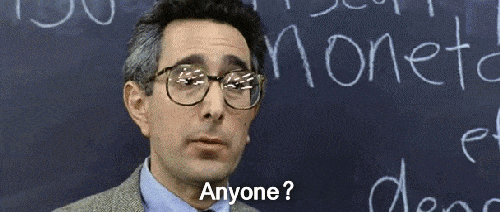This guy explains it better than I did...
How the Fed Rigs the Bond Market
Sales by ‘vigilantes’ used to serve as a warning of inflationary policies. The signal has been muted.
By Lawrence Goodman
Nov. 17, 2021 12:50 pm ET
High inflation should no longer be surprising, nor should it be labeled “transitory.” Its existence should prompt serious reflection on policy decisions and spur action to avoid a financial crisis.
The big issue is financial stability. Inflation hasn’t been this high relative to Treasury bond yields since the 1970s. Then as now, real bond yields—the gap between the 10-year Treasury and inflation—signaled distress for policy makers and market participants.
Since 1970, negative real Treasury bond yields typically have corresponded with a plunging stock market. Example: Yields reached a low of negative 4.9% in 1974. During that year, the S&P 500 fell 37%. Today, real yields of negative 4.7% are the second-lowest since 1970, yet the S&P 500 has risen nearly 30% over the past year.
What is different today?
First, the U.S. Treasury bond market has been rigged and manipulated since the Federal Reserve’s second quantitative-easing program began in 2010. Since then, Fed purchases of Treasury debt have funded as much as 60% to 80% of the entire government borrowing requirement. In other words, Fed actions have crowded out private-sector price discovery for more than 10 years, pushing yields to lows and stock prices to record highs. The consequence of this blurred line between Fed and Treasury responsibilities—“monetizing the debt”—is inflation.
Second, the infamous bond vigilantes, who sold bonds to protest inflationary policies, are relics of the past. They were driven by opportunity, not ideology. These investors voted on government budget deficits and debt management by buying or selling bonds every day. But active Fed intervention has silenced them. “Fighting the Fed” has always been fraught with risk, but fighting a Fed operating with such force will result only in big and consistent losses.
Now this odd phenomenon of record-low real interest rates and a soaring stock market is in danger of reversing. With rising inflation and big government borrowing, a spike in Treasury yields or a market-driven tightening could trigger a financial crisis. Favorable funding flows will vanish, no longer shielding Treasury yields from large budget deficits.
In fiscal 2021, the Fed purchased $1 trillion in Treasury debt, and the Treasury drained $1.6 trillion from its savings account at the Fed. These actions covered nearly the entire budget deficit, equal to 12% of U.S. gross domestic product, and nearly all the pandemic-related government borrowing. Based on monthly estimates, there was actually a funding surplus this past summer. It is no wonder the 10-year Treasury yield reached a low of 1.17% in August despite high inflation rates.
In fiscal 2022, less pandemic-related spending will likely mean a smaller budget deficit. Yet with Fed purchases ending and the Treasury savings account at the Fed depleted, new government borrowing could still reach $2 trillion, or 8% of GDP. In addition, the Treasury will need $500 billion in fresh funding to rebuild its Fed bank account.
Some suggest that the Fed has no choice but to keep interest rates low and allow inflation to erode the value of government debt. But this course of action would keep real yields shockingly low and allow asset-price inflation to remain a powerful force driving both wealth creation and inequality. More painful and unpredictable financial-market volatility would restrain growth and job creation. Worse, if the Fed has delayed a financial crisis, the fallout will be even more damaging when it does come.
Now, while economic growth is strong, is the time for officials to defuse imbalances and gradually restore market dynamics to bond yields. The Treasury and Congress should develop a credible path for sustainable government borrowing below 4% of GDP a year. This target is consistent with the upper limit for budget deficits observed by many emerging-market economies and in excess of the 3% of GDP fiscal convergence criteria in the European Union’s Maastricht Treaty.
The Fed must prepare markets for a lift in interest rates. The Fed’s tapering of Treasury purchases is an essential start, but may be too little too late. For financial stability, there is no choice but to act.
Mr. Goodman is president of the Center for Financial Stability.
https://www.wsj.com/articles/how-the...ry-11637165868
Originally Posted by lustylad
The author makes a number of very good points here, as he generally does. (I have been reading most of the stuff he writes for quite a while now.)
He was probably constrained by the WSJ editors to a limited amount of space, but I would add a few notes here about inflation expectations and draw a differential between the effects of uber-accommodative monetary policy and the gigantic fiscal surges inherent in all the covid relief and stimulus spending binges, which appear to have filled the economy's estimated output gap almost three times over.
I see the former as being the primary driver of asset inflation (financial assets, real estate, etc.), and the current consumer price inflation largely if not almost almost wholly a function of the massive fiscal packages. (Note, however, that the humongous asset purchases by the Fed enable the fiscal insanity, so the two go hand-in-hand.)
The first form of inflation greatly increases wealth inequality, and the second painfully straps household budgets of the working class and lower-middle class, so both are bad news for politicians who want to be seen as "champions of the people," yet seem all too willing to shove through stuff likely to ultimately result in their being blamed for undesirable policy outcomes.
If Republicans capture the House next year as seems highly probable, they will slam the door solidly shut on spending largesse in early 2023, and today's high-deficit-dependent economic "boom" could go up in a puff of smoke. This is the most heavily stimulated, medicated economy in US history, and a lot of factions had better be ready for a hangover.
That's why, as regards the inflation debate, I don't see this as remotely a 1970s redux and instead think the current set of conditions looks much more like the few years leading up to 1920, or the 1946-1948 period.
Does anyone remember reading about what happened in 1920-21, or 1948-49?
.
 Originally Posted by lustylad
Originally Posted by lustylad



